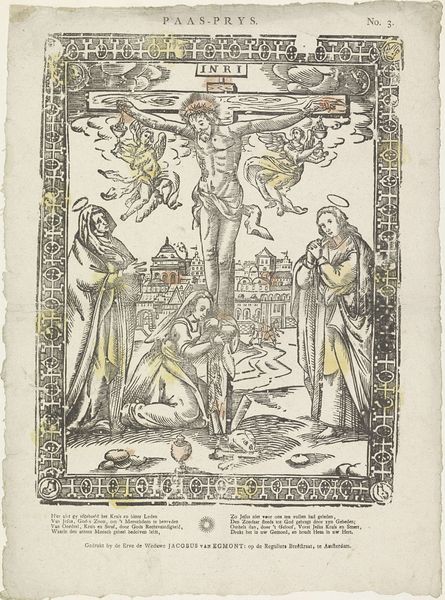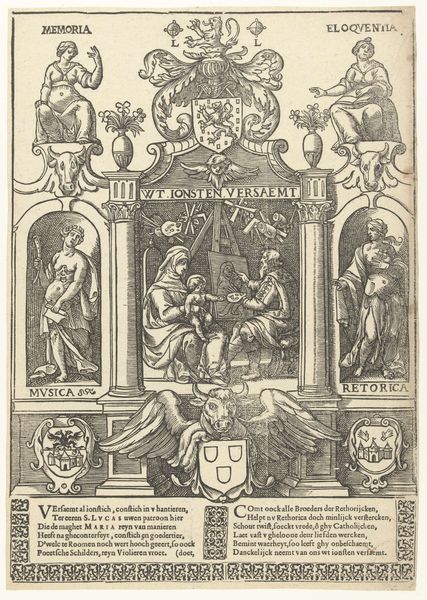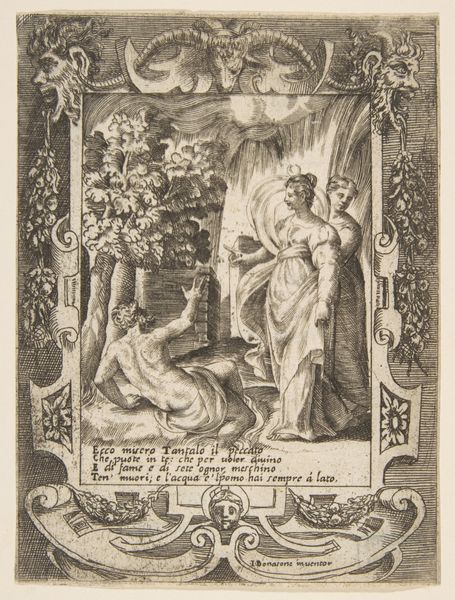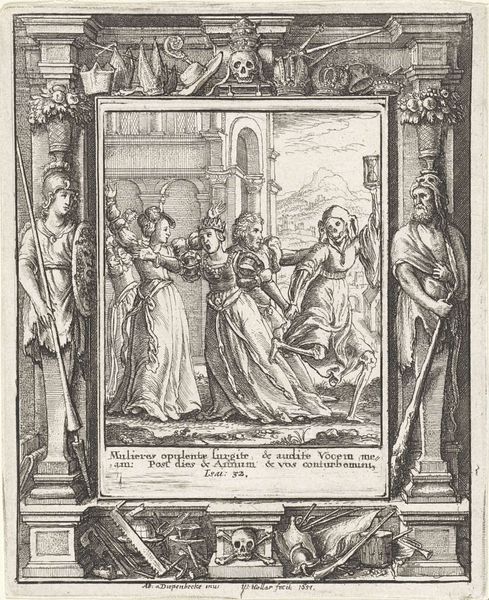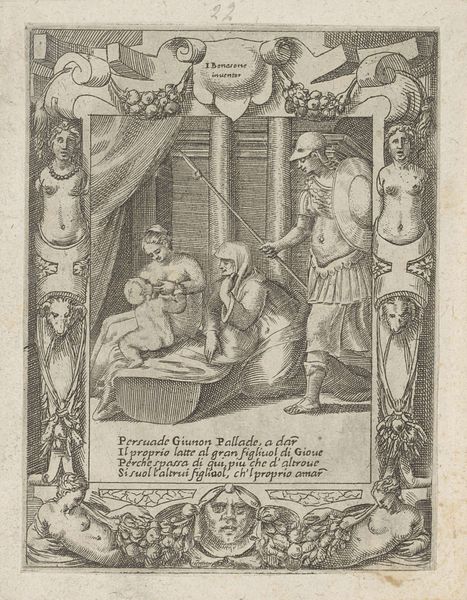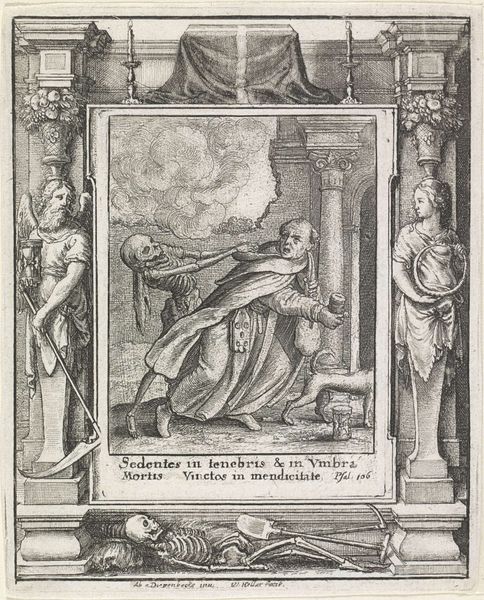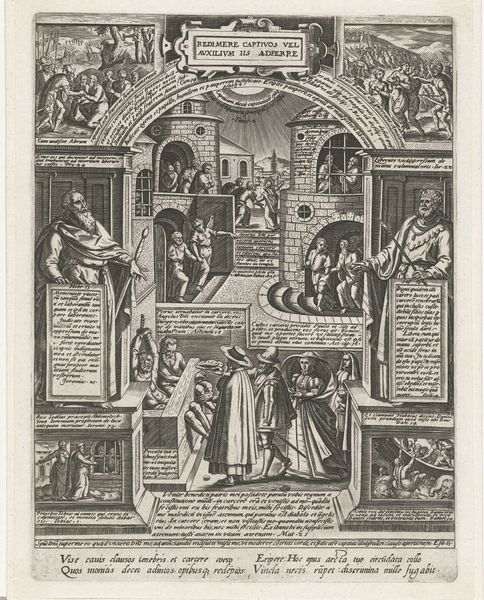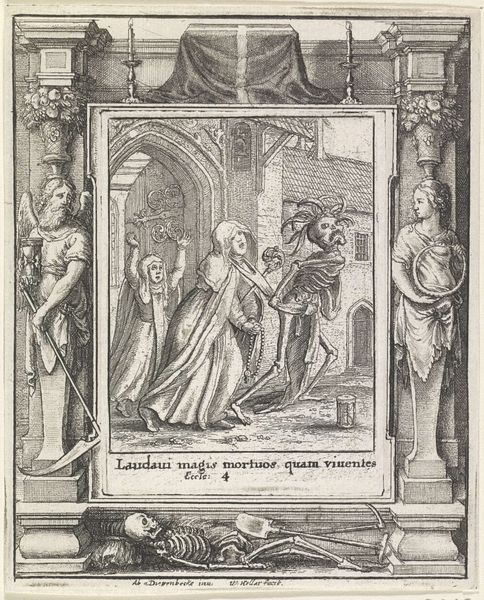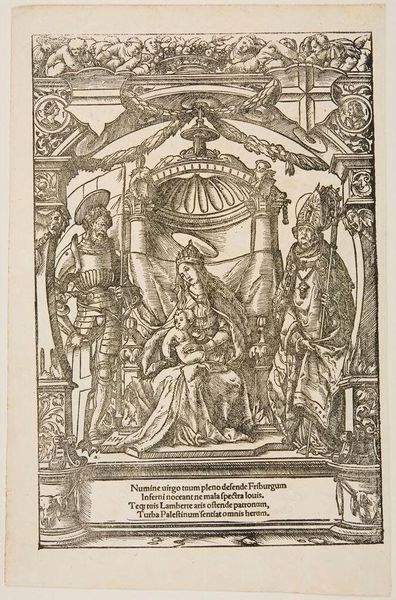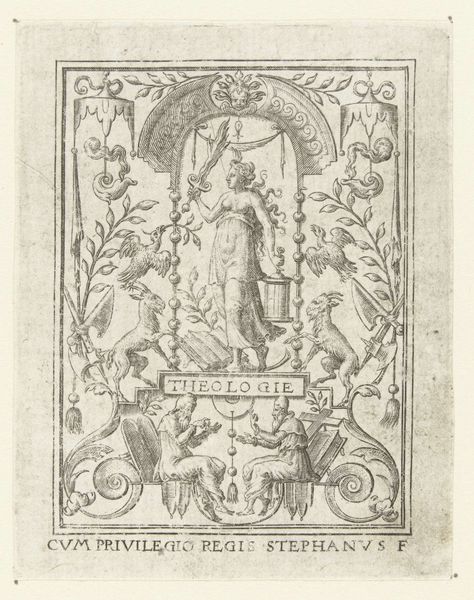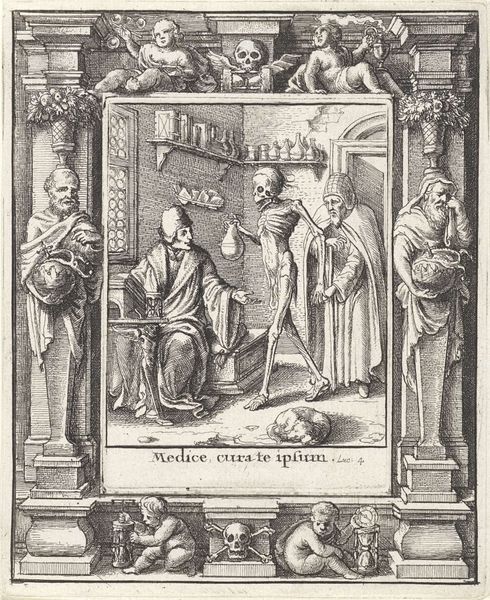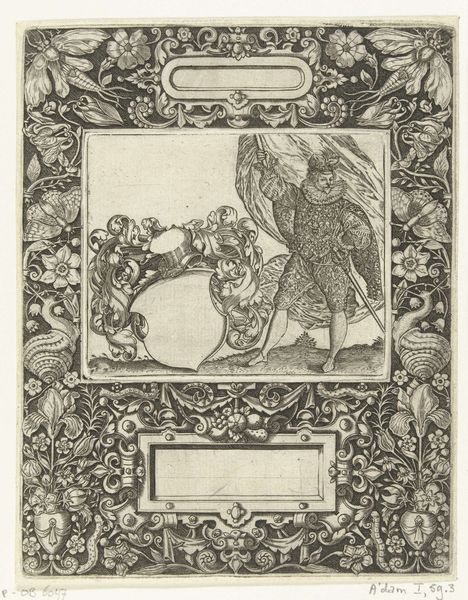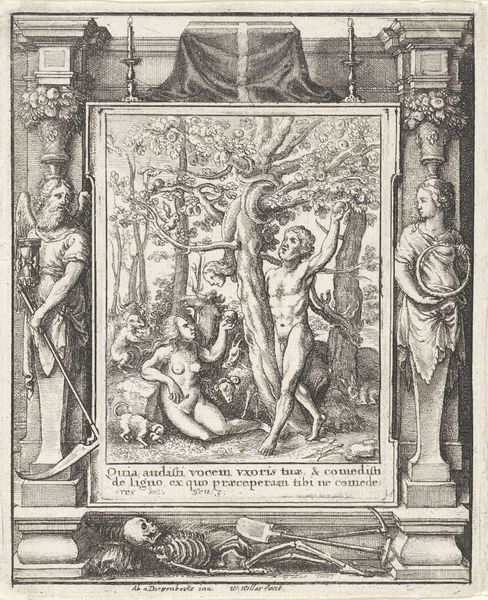
Dimensions: height 415 mm, width 310 mm
Copyright: Rijks Museum: Open Domain
Curator: Look at the intricate details in this engraving, "Paas-prys," dating from the late 18th century. It's currently held here at the Rijksmuseum and attributed to Erven de Weduwe Jacobus van Egmont. A rather small engraving; my initial impression is how powerful the artist makes the image through dense lines. Editor: Yes, that linearity, rendered in ink, creates a striking composition. The figure of Christ on the cross really dominates, while angels flutter and supportive figures grieve. I can't help but wonder, how was the subject position mediated for different viewers in this print's time? The stark representation would have resonated deeply within very specific religious, cultural, and economic landscapes. Curator: Absolutely. These types of prints were frequently used for instructional or devotional purposes, reflecting the evolving religious and social landscape. What's striking is the backdrop; is that supposed to be Jerusalem? The specificity, or lack thereof, becomes relevant to how people are meant to receive this image. How do they read themselves into the setting? Editor: The somewhat ambiguous cityscape does open questions about geographical context and imagined homelands. The arrangement also begs questions concerning who the publisher intended to be in dialogue with this representation. The bordering around the print is also extremely dense, but its content feels unaligned to what we see within the "frame." The print becomes almost a tableau for discussing social power through very specific modes of devotion. Curator: Indeed, thinking about this through contemporary theory allows us to analyze power dynamics within the art world, and religious organizations are no exception to that, influencing what’s produced and for whom. The details such as INRI and angels feel almost staged within a baroque-esque setting. This is all very meticulously planned and composed in a specific style. Editor: I think bringing a consideration for gender also adds additional meaning; we must analyze the ways masculinity is depicted as ideal in relation to displays of femininity through grieving figures. These power imbalances have social relevance even today. Curator: Precisely. Reflecting on these points brings into focus why it remains important to discuss art through lenses of historical and social understanding and also current thinking around identity, gender, and cultural expectations, like those present here in “Paas-prys." Editor: Examining how sociopolitical and cultural influences shape a work reveals a new narrative that helps us interpret the significance in this print as well as connect it to the public’s ongoing engagement with imagery.
Comments
No comments
Be the first to comment and join the conversation on the ultimate creative platform.
